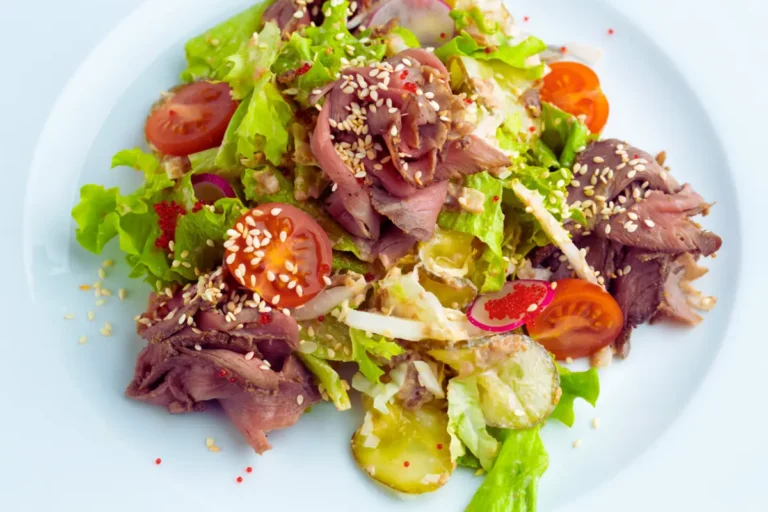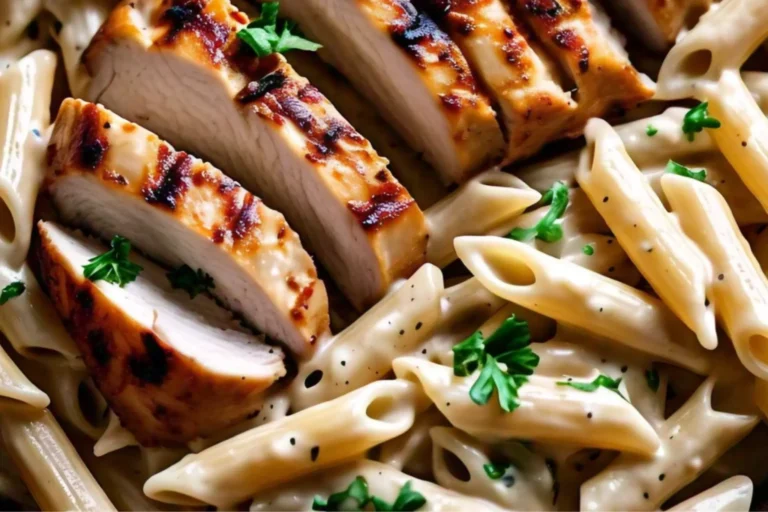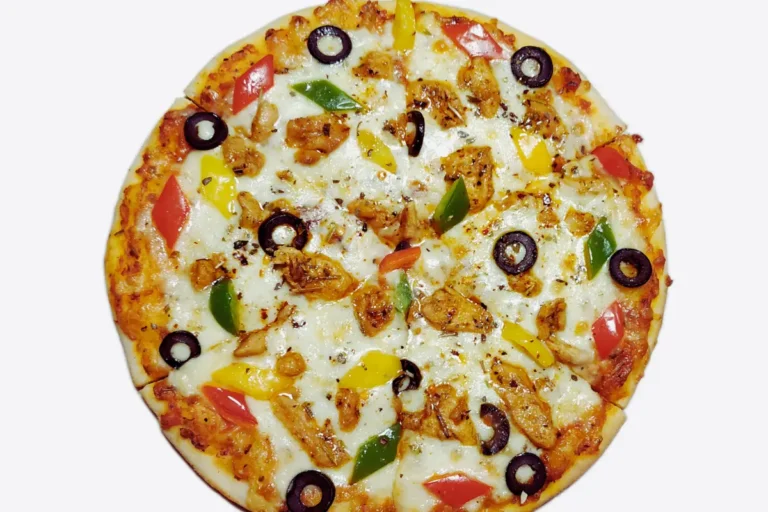Beef Udon Noodles: A Delicious Guide
Have you ever craved a warm, comforting bowl of noodles that not only fills your stomach but also warms your heart? If so, let me introduce you to the delightful world of beef udon noodles. This dish is not just a meal; it’s an experience that brings together the rich flavors of tender beef, chewy udon noodles, and a savory sauce that ties everything together.
In this blog post, I’ll take you through the journey of making udon noodles from scratch. I’ll share my personal experiences, tips, and tricks that I’ve learned along the way. This recipe is simple to follow and very satisfying, regardless of your level of culinary experience.So, let’s dive into the world of beef udon noodles and discover how to create this delicious dish at home!
What Are Udon Noodles?
Wheat flour, water, and salt are the ingredients for udon noodles, which are thick and chewy. Their flexibility makes them a mainstay in Japanese cuisine. Stir-fries, soups, and even cold udon with dipping sauces are some of the ways to serve it.
The texture of udon noodles is what sets them apart from other types of noodles. They have a delightful chewiness that makes every bite satisfying. Although udon noodles are typically served in a hot broth, stir-fried dishes like our beef udon noodles recipe are another way to enjoy them.
In Japan, udon noodles have been around since the 9th century. They are often enjoyed during special occasions and are a symbol of comfort food in Japanese culture. When you take a bite of beef udon noodles, you’re not just tasting a delicious meal; you’re also experiencing a piece of history.
What You’ll Need To Make Beef Udon Noodles
Ingredients
- Udon noodles: You can find fresh or frozen udon noodles at most Asian grocery stores.
- Beef: I recommend using thinly sliced beef, such as sirloin or ribeye, for tenderness.
- Vegetables: Common choices include bok choy, carrots, and green onions.
- Garlic and ginger: These aromatics add depth of flavor to the dish.
- Soy sauce: A key ingredient for the sauce, providing that umami flavor.
- Mirin: A sweet rice wine that counteracts the soy sauce’s saltiness.
- Sesame oil: For a nutty aroma and flavor.
- Broth: You can use beef broth or dashi for a more authentic taste.
For The Sauce
- Soy sauce: 1/4 cup
- Mirin: 2 tablespoons
- Sesame oil: 1 tablespoon
- Sugar: 1 tablespoon (optional, for sweetness)
- Water: 1/4 cup
How To Make Beef Udon Noodles
Preparation
- Slice the beef: If you haven’t bought pre-sliced beef, take a piece of sirloin or ribeye and slice it thinly against the grain. The meat will remain soft as a result.
- Chop the vegetables: Wash and chop your vegetables. I like to use bok choy for its crunch and color, but you can use any vegetables you prefer.
- Mince the garlic and ginger: These two ingredients are crucial for adding flavor to your beef udon noodles. A fine mince will help release their flavors into the dish.
- Prepare the sauce: In a small bowl, mix together the soy sauce, mirin, sesame oil, sugar, and water. Set it aside for later.
Cooking Instructions
- Cook the udon noodles: Bring a saucepan of water to a boil and cook them as directed on the package. Fresh noodles usually take about 3-4 minutes, while frozen noodles may take a bit longer. To halt the cooking process, drain and rinse them under cold water after cooking.Set aside.
- Sauté the beef: Heat 1 tablespoon of oil in a big skillet or wok over medium-high heat.Simmer the beef slices for two to three minutes, or until they are browned.Make sure not to overcrowd the pan; you want the beef to sear nicely.When the meat is done, take it out of the skillet and put it aside.
- Stir-fry the vegetables:Add the ginger and minced garlic to the same skillet, and if necessary, add a little more oil. Sauté for about 30 seconds until fragrant. Next, add the chopped vegetables and stir-fry for 2-3 minutes until they are tender but still crisp.
- Combine everything: Return the vegetables and cooked beef to the skillet. To ensure that the steak and vegetables are evenly coated, add the prepared sauce and toss everything together. Simmer for 1 minute to combine the flavors.
- Add the udon noodles: Finally, add the cooked udon noodles to the skillet. Gently toss everything together, ensuring the noodles are well mixed with the beef and vegetables.Cook for a further two to three minutes, or until well heated.
Recipe Variations
- Vegetarian Option: For a vegetarian variation, use tempeh or tofu in place of the meat. For more taste and texture, you can also include additional veggies, such as bell peppers or mushrooms.
- Spicy Beef Udon: If you enjoy a bit of heat, add some chili paste or sliced fresh chili peppers to the sauce. This will give your udon noodles a spicy kick.
- Different Sauces: Experiment with different sauces like teriyaki or hoisin for a unique twist on the traditional flavor profile.
Conclusion
Making beef udon noodles at home is not only satisfying but also a fun culinary adventure. The combination of tender beef, chewy udon noodles, and a savory sauce creates a dish that is sure to impress your family and friends.You should give this dish a try and customize it by adding your preferred ingredients or making changes.
The key to cooking is experimenting and figuring out what suits you best. So, gather your ingredients, follow the steps, and enjoy a delicious bowl of beef udon noodles that you can proudly say you made from scratch!
FAQS
What kind of beef is used in udon?
When it comes to beef udon, the most commonly used cuts of beef are thinly sliced sirloin, ribeye, or brisket. These cuts are favored for their tenderness and flavor, making them perfect for pairing with the chewy texture of udon noodles.
Difference Between Beef Udon and Lo Mein
The primary difference between beef udon and lo mein lies in the type of noodles used; udon noodles are thick, wheat-based, and chewy, while lo mein noodles are typically thinner egg noodles. Additionally, lo mein is often stir-fried with a variety of sauces, whereas beef udon is usually served in a broth or sauce that enhances the noodle’s texture and flavor.
What is Special About Udon Noodles?
Udon noodles are unique due to their thick, chewy texture, which provides a satisfying bite. They are versatile and can be served in various ways, including in soups, stir-fries, or cold with dipping sauces, making them a beloved staple in Japanese cuisine.
Is Beef Udon Healthy?
Beef udon can be a healthy meal option, especially when made with lean cuts of beef and plenty of vegetables. The dish provides a good balance of carbohydrates from the noodles, protein from the beef, and essential vitamins and minerals from the vegetables, making it a nutritious choice when enjoyed in moderation.
More Recipes To Try
Beef Udon Noodles: A Delicious Guide
Course: Main CourseCuisine: Asian4
servings15
minutes20
minutes35
minutesIndulge in the rich flavors of beef udon noodles, featuring tender beef and chewy noodles in a savory sauce. This comforting dish is perfect for any occasion!
Ingredients
12 oz (about 340g) Udon noodles
8 oz (about 225g), thinly sliced Beef (sirloin or ribeye)
2 cups, chopped Bok choy
1 medium, julienned Carrots
3 chopped Green onions
3 cloves, minced Garlic
1 tablespoon, minced Ginger
1/4 cup Soy sauce
2 tablespoons Mirin
1 tablespoon Sesame oil
4 cups Beef broth or dashi
Directions
- After cooking the udon noodles as directed on the package, drain and rinse.
- Sauté the sliced beef in a skillet until browned, then set aside.
- Stir-fry the garlic and ginger after adding the chopped vegetables.
- Combine beef and sauce, simmer for a minute.
- Add udon noodles, toss everything together, and heat through.
- Enjoy your homemade beef udon noodles!








